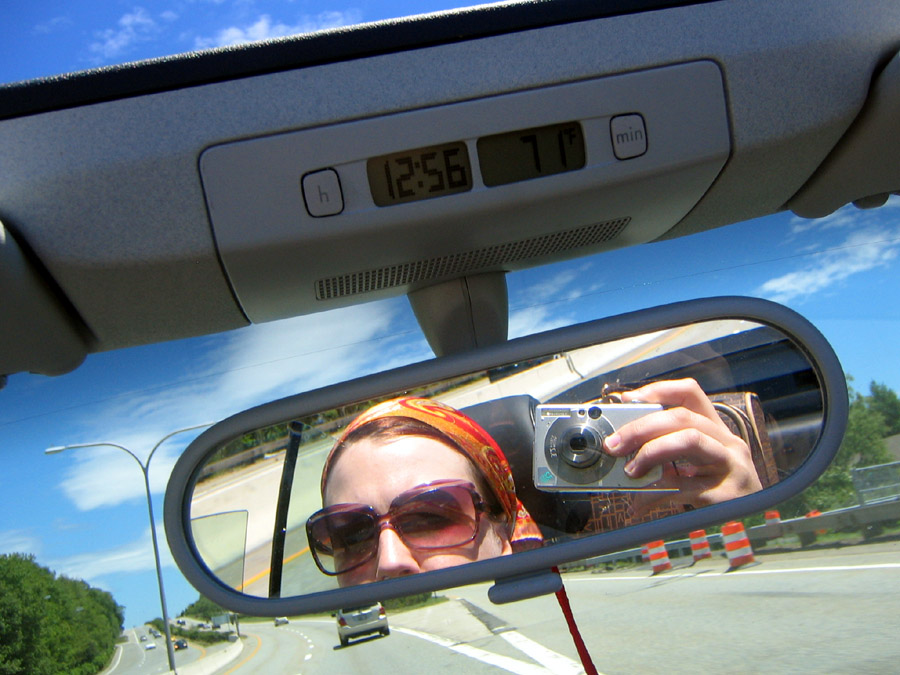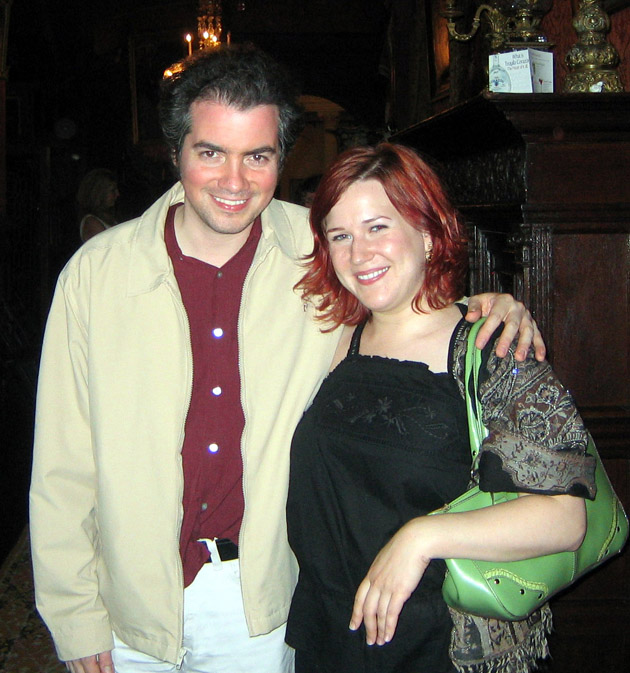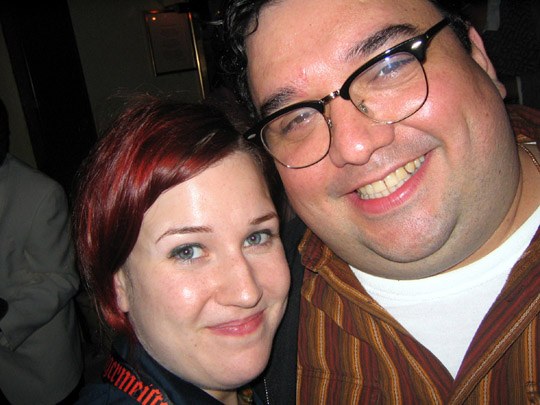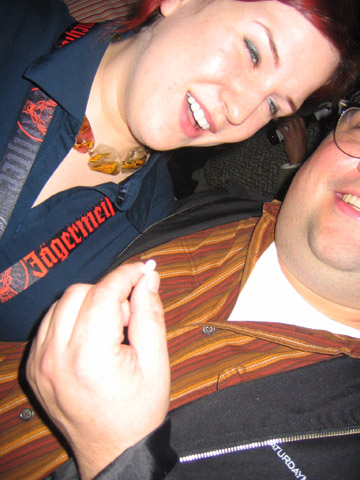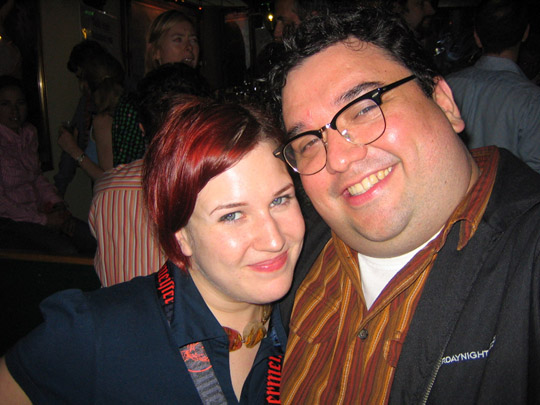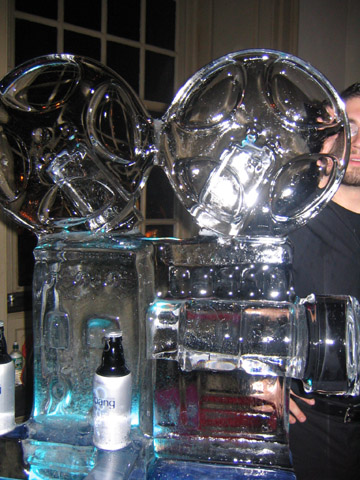Feast or famineThanks so much, Sanchez100 for
responding to my blog, popping my comments cherry as it were. Yes, I am up for the final two days of the festival (wish it could go on longer, actually). Perhaps we can catch up at the closing night party at the Belcourt Castle tomorrow evening, assuming you’re still in town. I’ll be wearing the red, er, head of hair.
My day was sort of incongruous, but in some way balanced in its extremes.
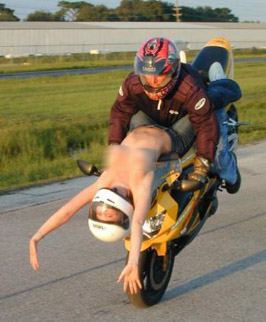
(Extreme! Breasts blurred to protect the innocent. Danger, Will Robinson – mammary glands).
And now for the seriousness…
Laura Greenfield’s “Thin,” a documentary about an inpatient eating disorder clinic in Florida, elicits a physical, visceral response. My only complaint, really, is that the film is framed with flourishes of manipulative music that seem to say, “We are disturbed. And SO SAD! Oh, all of we Daddy’s little girls gone bad; lost little girls.” Their eyes are already saying the same thing, but for real. Not sappily with strings and melodies reminiscent of a music box containing a ballerina and dirty razorblades used for cutting.
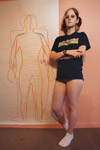
(Brittany, fifteen, one of four young ladies chronicled in "Thin").
Even with the music the film is a deep view into these young women’s tenuous lives. Everyone knows at least one person with an eating disorder and it is incredibly eye opening to be able to see into this world, usually fraught with secrets and lies. Eating disorders are about hiding, one of the therapists at the Renfrew Clinic points out. So as I watch the film, all I want to do is tell these ladies – the patients – how strong I think they all are for being so goddamn open.
I’ll think about these young women for a long time. Shelly, Polly, Brittany and especially Alisa. Alisa is such a positive force in “the community” of Renfrew that it is very hard to watch her later, at home with her children, stuck. The viewer kind of dreads the last part of the film, knowing there will be news of how these ladies are doing.
There are funny moments, too. Shelly’s father actually says he thinks her eating disorder stems from the time she spent in Utah.
“Have you BEEN to Utah?” he asks the therapist. He goes on to say how different Utah is. I expect him to talk about Mormons or the anal restriction of alcohol consumption. (“Anal constriction.” Huh).
“Everybody eats vegetables,” he says, of Utah. “They don’t eat good food. They walk their little dogs.” Wow, right? Shelly’s problem couldn’t possibly have anything to do with the fact that her father put her in the hospital to move her feeding tube (the film doesn’t cover why she needs one) from her nose to the less visible, less upsetting (to him) stomach area, without her consent. So of course she begins to purge through the tube.
The most amazing part of the film, I think, is at the end when the young women are all concerned about Brittany, fifteen, who has to leave because her insurance is running out. She will most certainly lapse back into restricting her meals and purging, having started her eating disorder at age eight and coming from a mother who very clearly has an eating disorder as well (she and her mother would play “chew and spit,” going through bags and bags of candy). The other young women in the group try to get through to Brittany, explaining what they would give to have gone through recovery at that early age. They would have enjoyed their lives, they say. They would remember things other than bringing their own food to Thanksgiving dinners and counting calories and the like. And Brittany says she wishes they would let her die. It’s heavy.
Because these women’s problem is enabled by secrecy and lies, full disclosure is necessary for treatment to work. One of the therapists tells Shelly that when she starts to assert herself in the world and be authentic the symptoms (i.e. the anorexia/bulimia) will probably wane. It is fascinating, and good advice, I think, for anyone. B-E A-U-T-H-E-N-T-I-C, Be Authentic, Be-e Authentic.
Must be time to go to bed if I’m showing my eighth-grade cheerleading colors. Yikes.
Not about the film festival, but: our bed and breakfast was supposed to have wireless Internet access. It didn’t. And the young woman working there this morning seemed terribly put out by the whole shebang and my need to “do my work.” (“But I’ve got homework to do.” “That’s ok, son, you can do it on the boat!”) So we switched B & B’s, and as I write this to you, I am, no kidding, eating a chocolate-covered strawberry and feeling luxurious, resting up for more films tomorrow and of course that hot closing night party.
Following is a brief photo essay of the events…
Me at the old place, trying to get on the Internet to deliver the chocolate-coated film festival goodness to you:
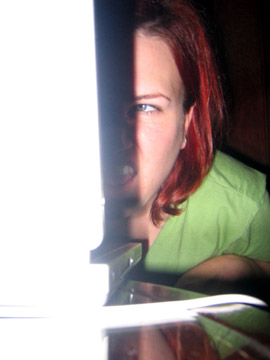
Me at the new place, luxuriating before a nice, strong airport signal, delivering the chocolate-coated strawberry goodness to my gullet:
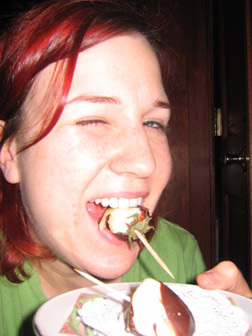
And now, good night fair readers:
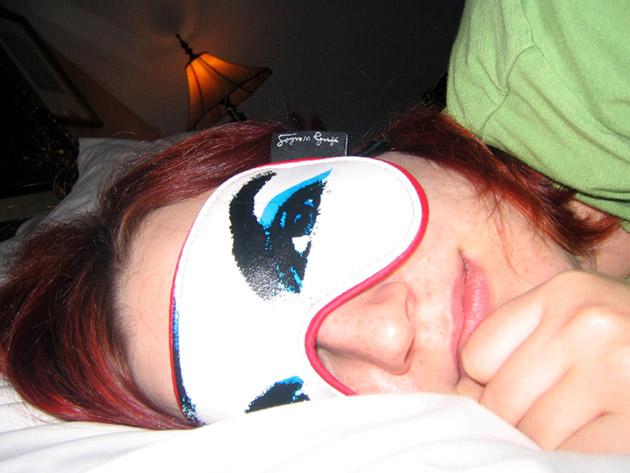
PS. Tucker’s Bistro? You kidding me? How freaking good is that place (not to mention the Am-Bi-Freakin’-Ance)? Asparagus salad, shrimp nachos (Thai seasoning), medium rare sirloin, Cakebread Chardonnay, fallen lava cake, homemade Bailey’s. Again – YOU KIDDING ME?
